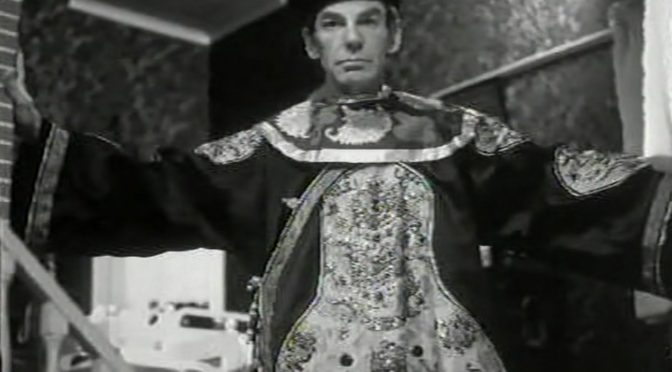
By Jessica Holmes
We all have a different idea of the concept of ‘fun’. To me, ‘fun’ is a trip to Blackpool Pleasure Beach. I like a good rollercoaster. To others, ‘fun’ is watching a game of cricket. Strange but true. And to one peculiar individual, ‘fun’ is kidnapping people and making them play banal playground games under threat of eternal imprisonment and/or death.
To each one's own, I suppose.
Let’s take a look at The Celestial Toymaker.
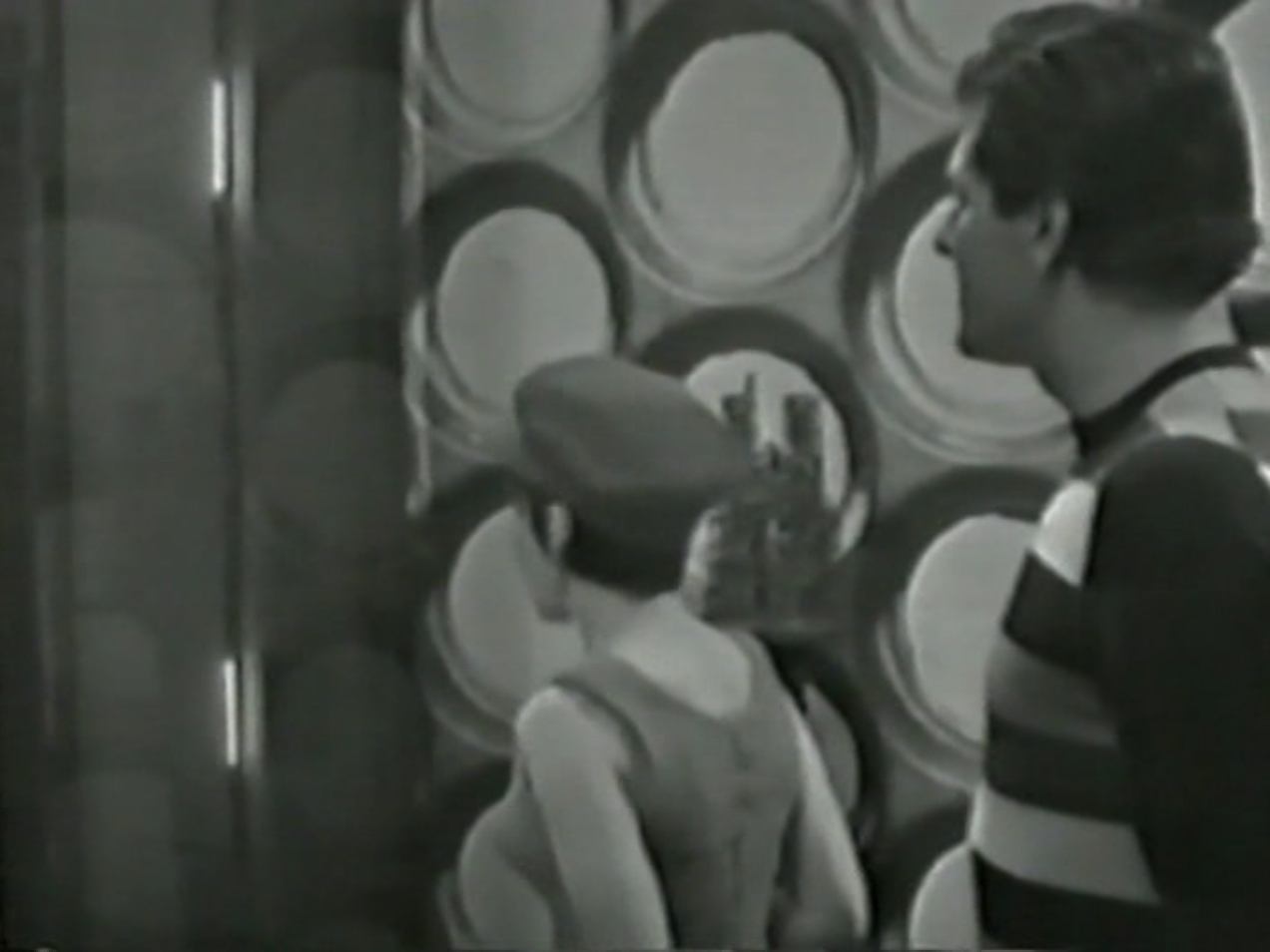
THE CELESTIAL TOYROOM
As an aside before we begin, I am going to have to have a good look at my TV antenna. It was on the blink for much of the serial, so there’s every chance there are visual details in the plot that I may have missed.
We pick up where we left off last time: the TARDIS has landed in an uncertain time and place, and the Doctor is nowhere to be seen.
He's not gone walkabout, as you might expect. We can still hear his voice, but he’s otherwise completely undetectable, both invisible and intangible. Unable to operate his ship, the Doctor decides to leave the TARDIS to investigate. What could have caused this?
Well, I have an idea. Enter the Celestial Toymaker.
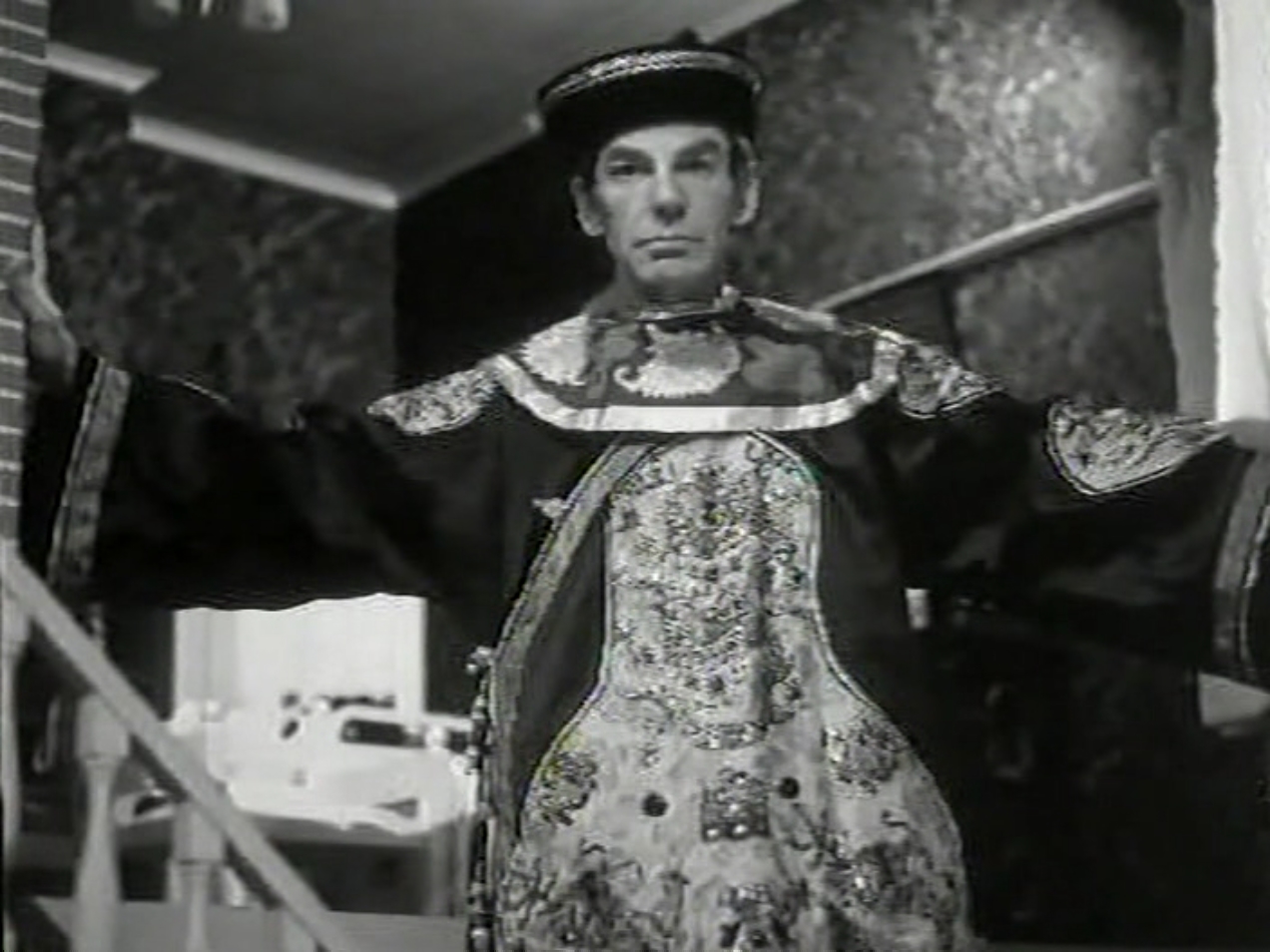
Now, this might not be on purpose, but considering he’s dressed in the (rather splendid) garb of an Imperial Chinese bureaucrat, I think it’s worth pointing out the use of the word ‘celestial’. Besides the more obvious meaning, it's also an old term for Chinese people, and not a very polite one either. It originally stemmed from Imperial China being also called the ‘Celestial Empire’, and so people from China who came to other countries were called ‘celestials’. It’s fallen out of fashion in more recent years, and is now considered to be more of a slur. Of course, the writer might not have meant anything by it, but with the Toymaker being dressed the way he is I would think it prudent to have a little more care in choice of words. Or choice of fashion.
It’s not the most egregious bit of language in this serial, but it seemed worth discussing.
The Toymaker does certainly live up to the latter part of his name, his realm littered with a variety of playthings. And that's not all he can do. In an act of sadism against the viewer, he gives his clown dolls the spark of life.
The Doctor suddenly reappears upon exiting the TARDIS, and ignores Dodo’s excellent advice that they should get back in and leave. Then again, if he did the sensible thing, most episodes would finish before they even started.
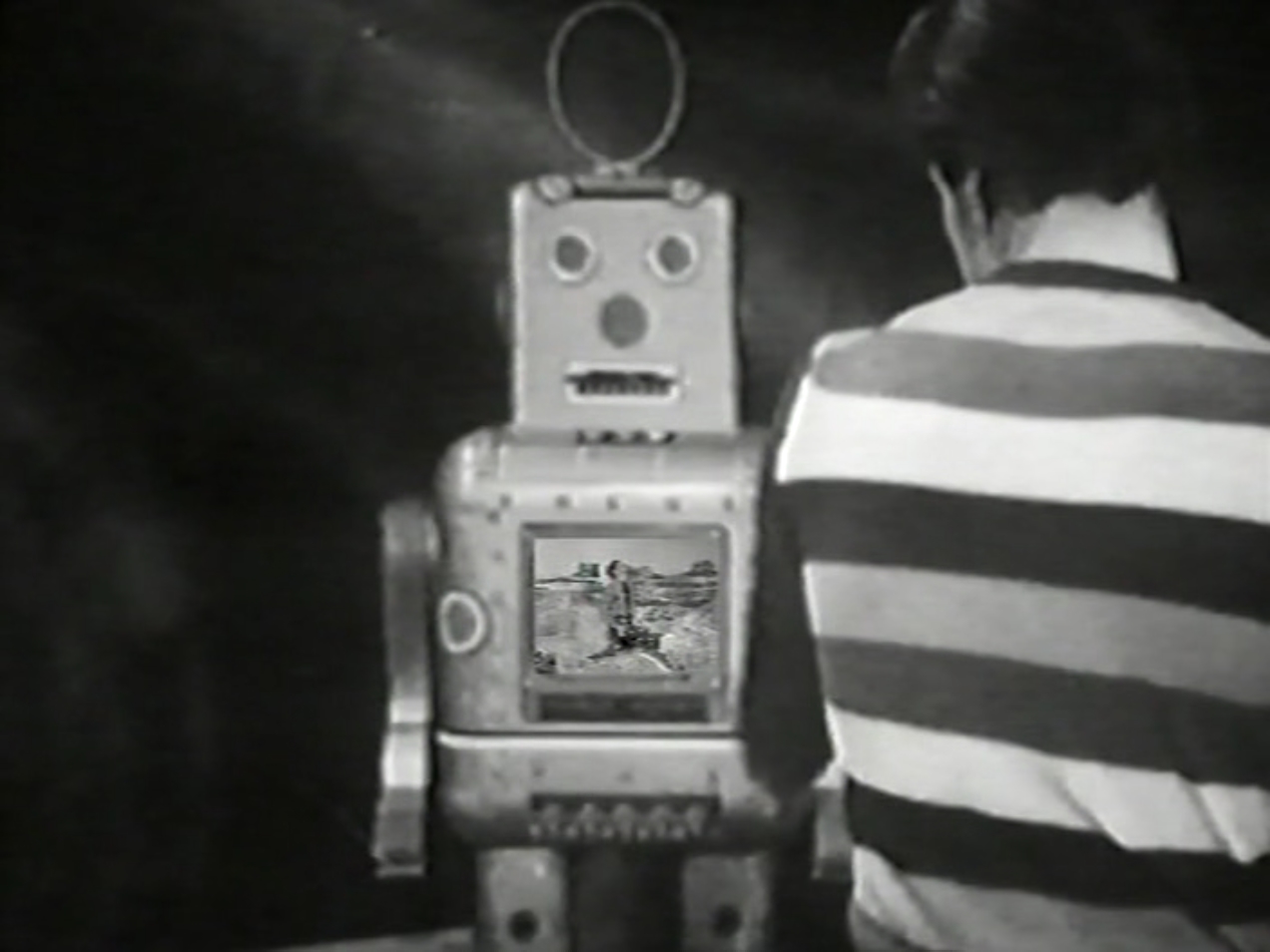
Steven sees visions of his memories in the chest of a big wind-up toy robot (it makes about as much sense as everything to follow), and the Doctor realises that they’re in the realm of the Celestial Toymaker.
That clears that up.
And now for the fun and games! The Toymaker spirits the Doctor away, leaving the others to get acquainted with the obviously evil clowns. I’m not afraid of clowns but I don’t much care for them in general, and these two seem designed to push my buttons.
The Toymaker is bored, you see, and his guests are his new playmates, willing or no. Steven and Dodo are going to have to complete a series of challenges if they ever want to find the TARDIS again, and they’re going to have to do it before the Doctor completes a 1023-move puzzle. Oh, and if they lose, they’ll be trapped here as a toy… forever.
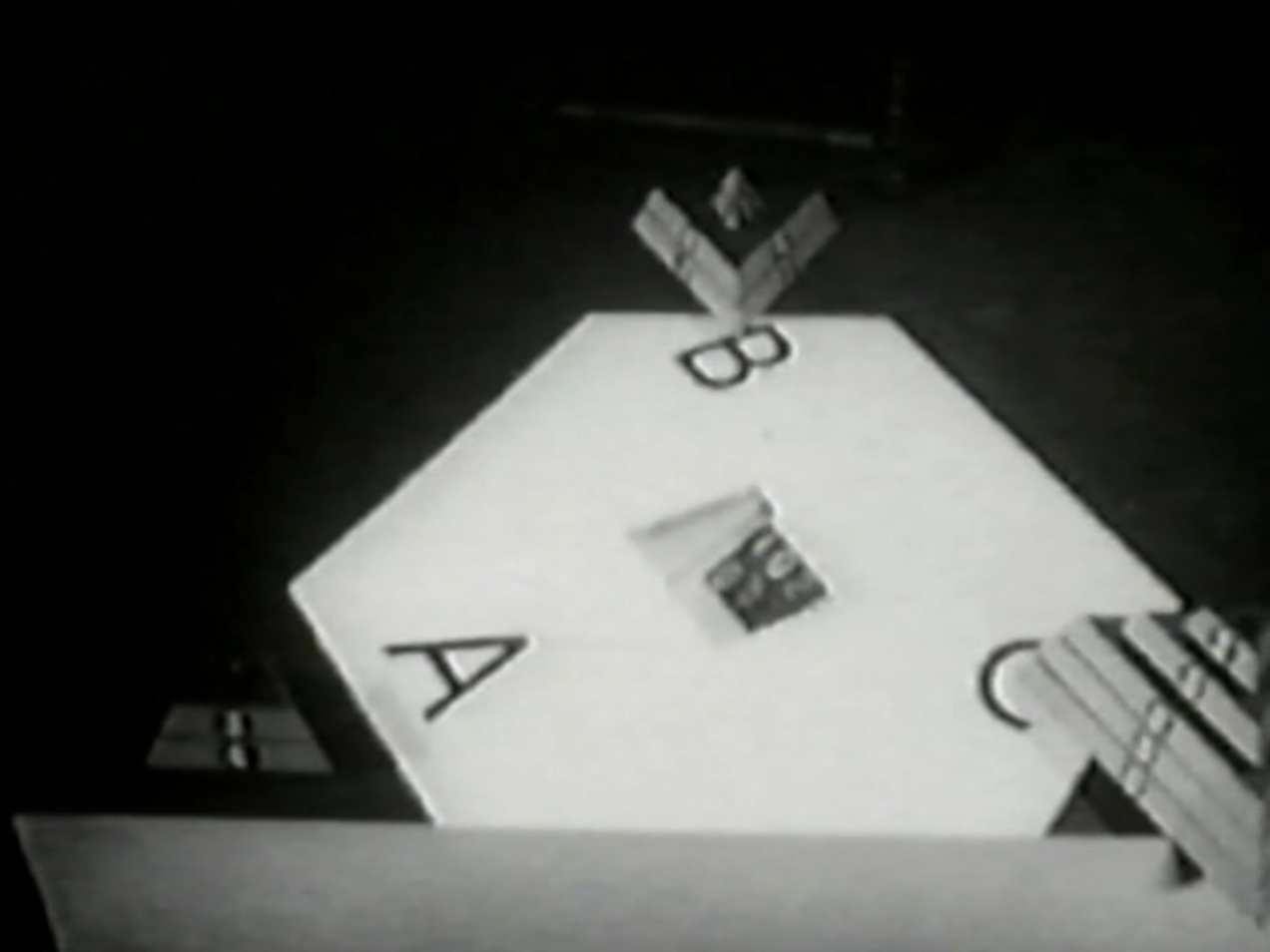
The Toymaker sets the Doctor off on his puzzle, a 10-piece version of a puzzle more commonly known as the Tower Of Hanoi, but here referred to as the Trilogic Game. How it’s played is not important, but we’re subjected to an explanation anyway.
Meanwhile, the clowns set up an obstacle course for the others. They’re going to have to make their way through without falling down, and they’re going to do it blindfolded.
The clowns go first, the male one (Joey) running the course as the other (Clara) guides him using a buzzer.
The Doctor tries to communicate with his companions and warn them that the Toymaker’s minions are likely to cheat, but the Toymaker cuts him off. As punishment, he dematerialises most of the Doctor's body, except for his hand, which he needs to move the pieces.
Back in the other room, the clowns finish the course, and Steven and Dodo have their turn. It’s hard enough for Dodo to guide Steven using buzzer signals in the first place, but Joey makes it even harder as he moves bits of the course around.
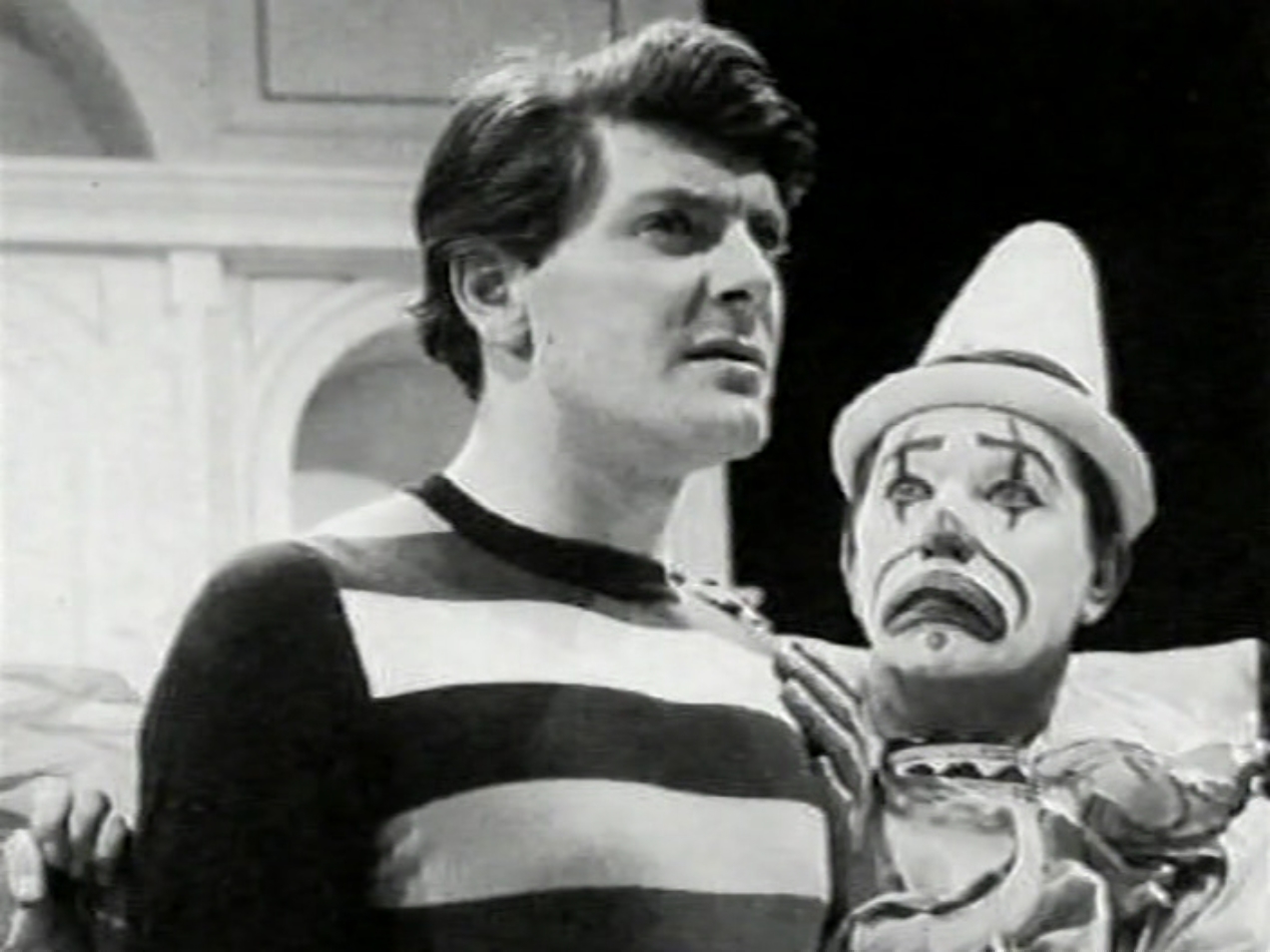
They’re also extremely annoying. I cannot overstate how annoying they are. Clara, for some reason, keeps eggs in her hair. That’s just plain unsanitary. Joey won’t stop tooting his horn (not a euphemism), greatly irritating Steven and also me. Then there’s Clara’s incessant giggling.
I’m just saying if Steven snapped and knocked their heads together, I wouldn’t blame him in the slightest.
I hope they’re not meant to be funny.
Distracted and misled, Steven ends up right back where he started, only for Dodo to discover that Joey’s blindfold is see-through. The clowns cheated! The pair force the clowns to run the course again, determined that they will have a fair game. Joey has a harder time of it this go around, and when he stumbles and falls, Clara slumps lifelessly over the controls, and a police box appears. Alas, it’s not the real TARDIS.
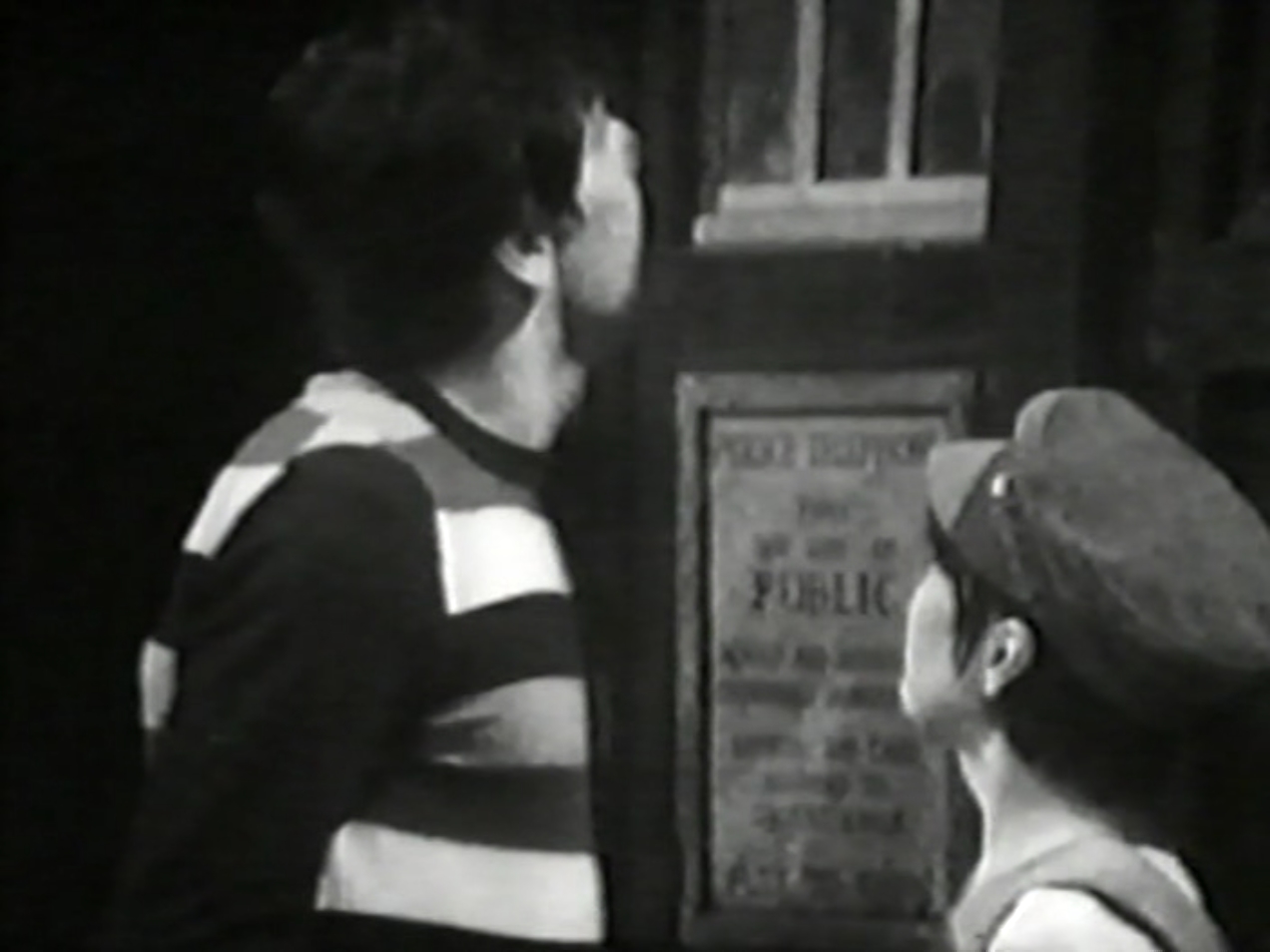
Steven and Dodo find a slip of paper with a riddle, and exit through the rear of the fake TARDIS, the clowns reverting to their original state as they leave.
Before the closing credits roll, the riddle flashes up on screen. I had hoped that this was so viewers could make a note of it and ponder the solution at home, but no. It’s pointless. I spent precious minutes of my life contemplating this, and for what?
Four legs,
No feet,
Of arms no lack,
It carries no burden on its back.
Six deadly sisters,
Seven for choice,
Call the servants without voice.
THE HALL OF DOLLS
The Doctor continues his game, and Steven shows off his problem-solving capabilities when he comes to a door that won’t budge. He tries everything: pushing, shoving, hitting, more pushing. Nothing seems to work.
Dodo tries pulling, and voila! The door opens.
The Doctor tries again to communicate with his companions, so the Toymaker takes his voice. Looks like Mr. Hartnell’s off on his holidays.
Steven and Dodo soon meet their next challengers: the King and Queen of Hearts. How very Lewis Caroll.
With the arrival of the King and Queen comes a pertinent question: are these challengers entirely products of the Toymaker’s imagination, or are they people in the exact same predicament as Steven and Dodo? Steven’s firmly in the former camp, whereas Dodo is in the latter. As for me? Well, I’m still mulling it over.
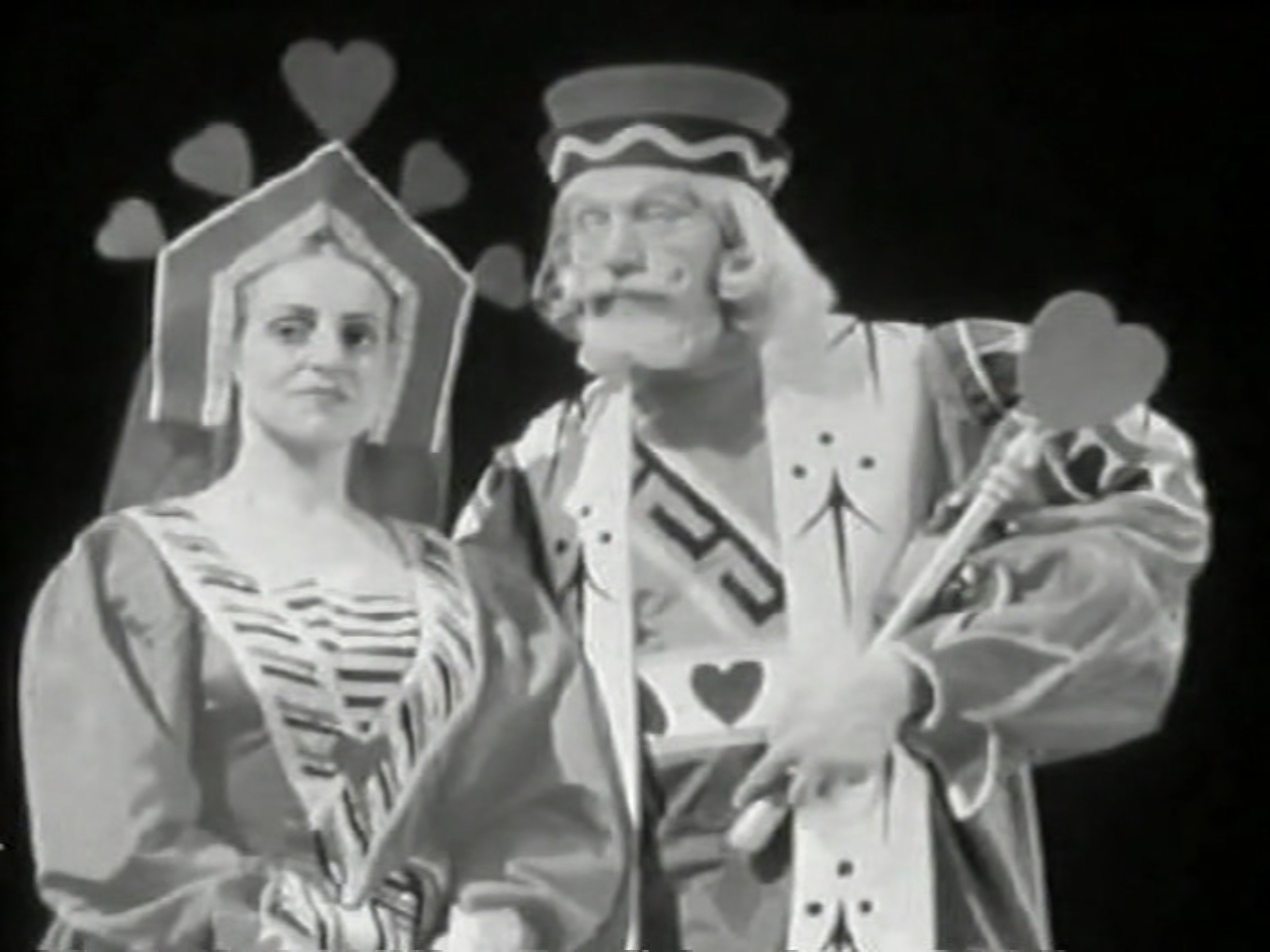
There’s also a Knave and a Joker but they’re not very important.
The group find two throne rooms, one with four thrones and the other with three. Seven in total. Seven for choice, in fact. They quickly realise that only one of these thrones is safe to sit on, and they have to find it to escape. But how to tell which is safe? Fortunately, there are a few cupboards in which Steven and Dodo find a number of life-sized dolls. The King and Queen catch up to them, and Dodo, seeing them as potential allies rather than rivals, explains that they can use the dolls to test the chairs.
Steven chastises her against talking to the pretend people, which the King and Queen don’t much appreciate. Each taking a doll, the King and Queen go to try the thrones in the other room, deciding to pick a chair to test at random.
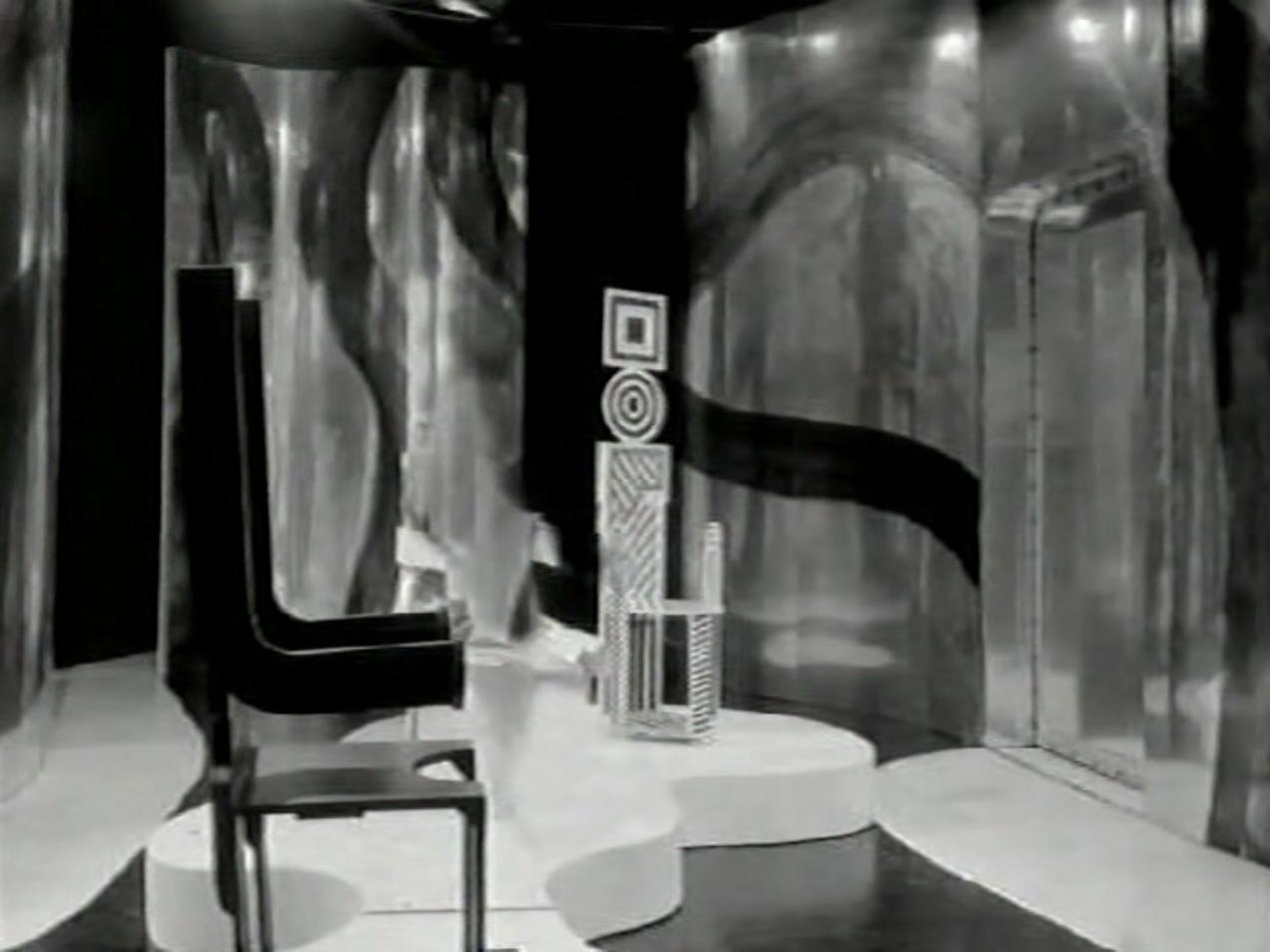
And then the King recites Eeny Meeny Miney Mo. Specifically, the old version which unfortunately is still quite popular. For those not in the know, the old version contains an extremely racist word I shall not be repeating here. Suffice to say it begins with the letter N. Sadly, there are many in Britain who wouldn’t think twice about using that word.
I can’t claim to be surprised, as the BBC is no stranger to racist programming. An obvious example of that would be The Black-And-White Minstrel Show, which has been running on the BBC for a good long while now and doesn't seem likely to stop any time soon.
It just saddens me to think that there may be millions of British children out there who have just been told that this is an acceptable word to use. How long before it enters their vocabulary?
Words have power, and when one's words are being broadcast to around eight million viewers, as a writer one has a responsibility to choose them carefully.
That's about all I feel able to say on the matter, so I shall press on.
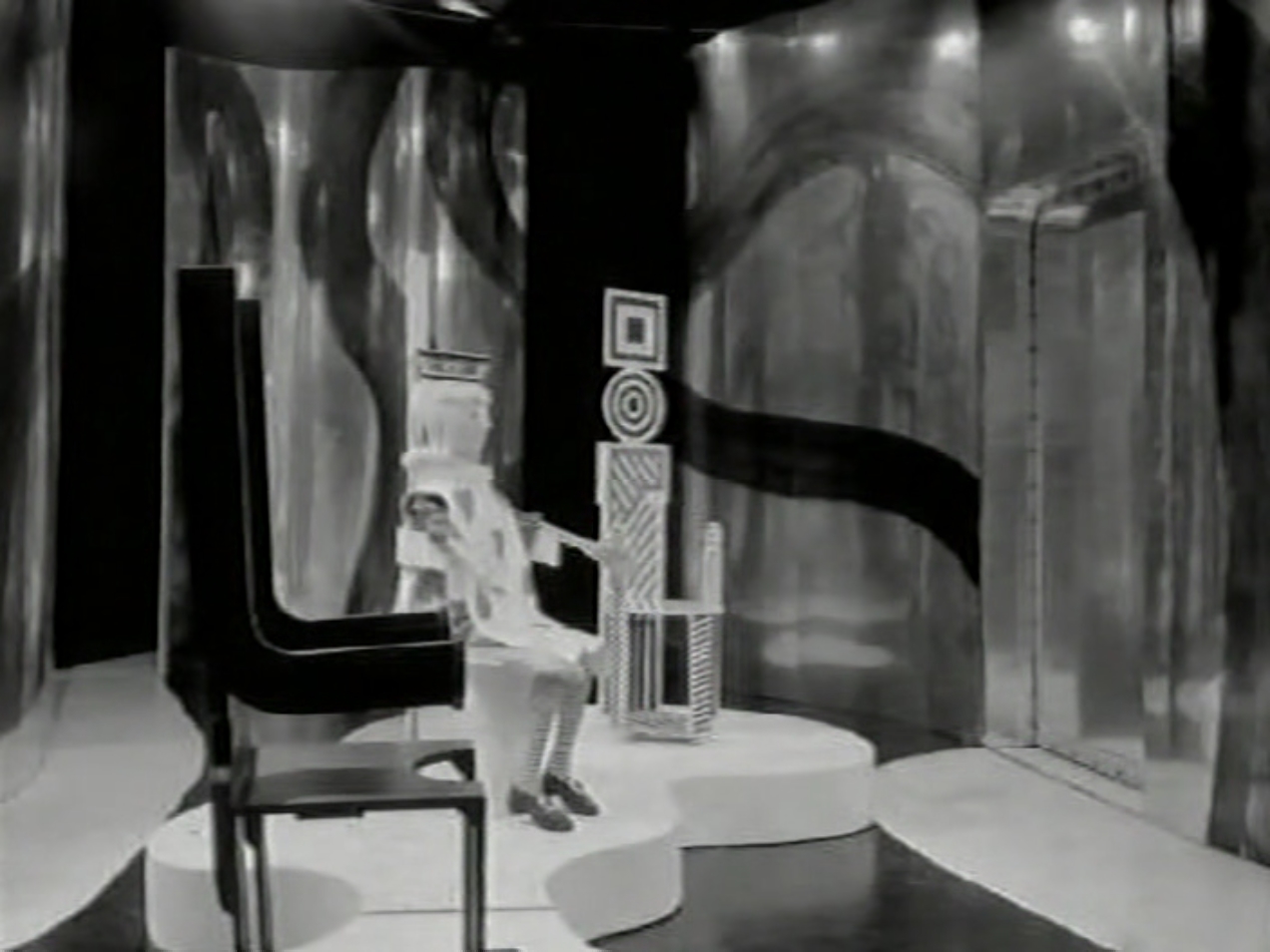
Picking a throne, the King throws a doll onto the seat, only for it to get its head rattled off.
In the other room, Dodo and Steven are arguing over whether they should be helping the King and Queen, as the royals believe there to be only four dolls, with Steven keeping the knowledge of the other three to himself.
The question of their humanity comes up again, with Steven asserting that they’re tools of the Toymaker, so the pair have to look out for themselves. Normally I would side with Dodo, who thinks they’re innocent victims of the Toymaker, but I am inclined to agree with Steven here. They just don’t strike me as real people. They’re archetypes. They’re a lot like their counterparts from Alice In Wonderland, with the timid, submissive King and the dominant Queen. It's a bit of a sexist dynamic and all.
Dodo and Steven try a couple of chairs with no luck, watched by the Knave. The Knave doesn’t do an awful lot, though he does go back to check up on the King, who (supposedly) jokingly offers him a seat.
The King runs out of dolls to use, so he and the Queen return to Steven and Dodo, where they learn about the additional dolls after trying to force the Fool to be their guinea pig.
Well, even if they are real people, they’re real prats.
Taking the last dolls with them, the King and Queen leave Steven and Dodo with only one chair left in the room, and nothing to test them with.
Dodo sits down… and it’s not the right chair.
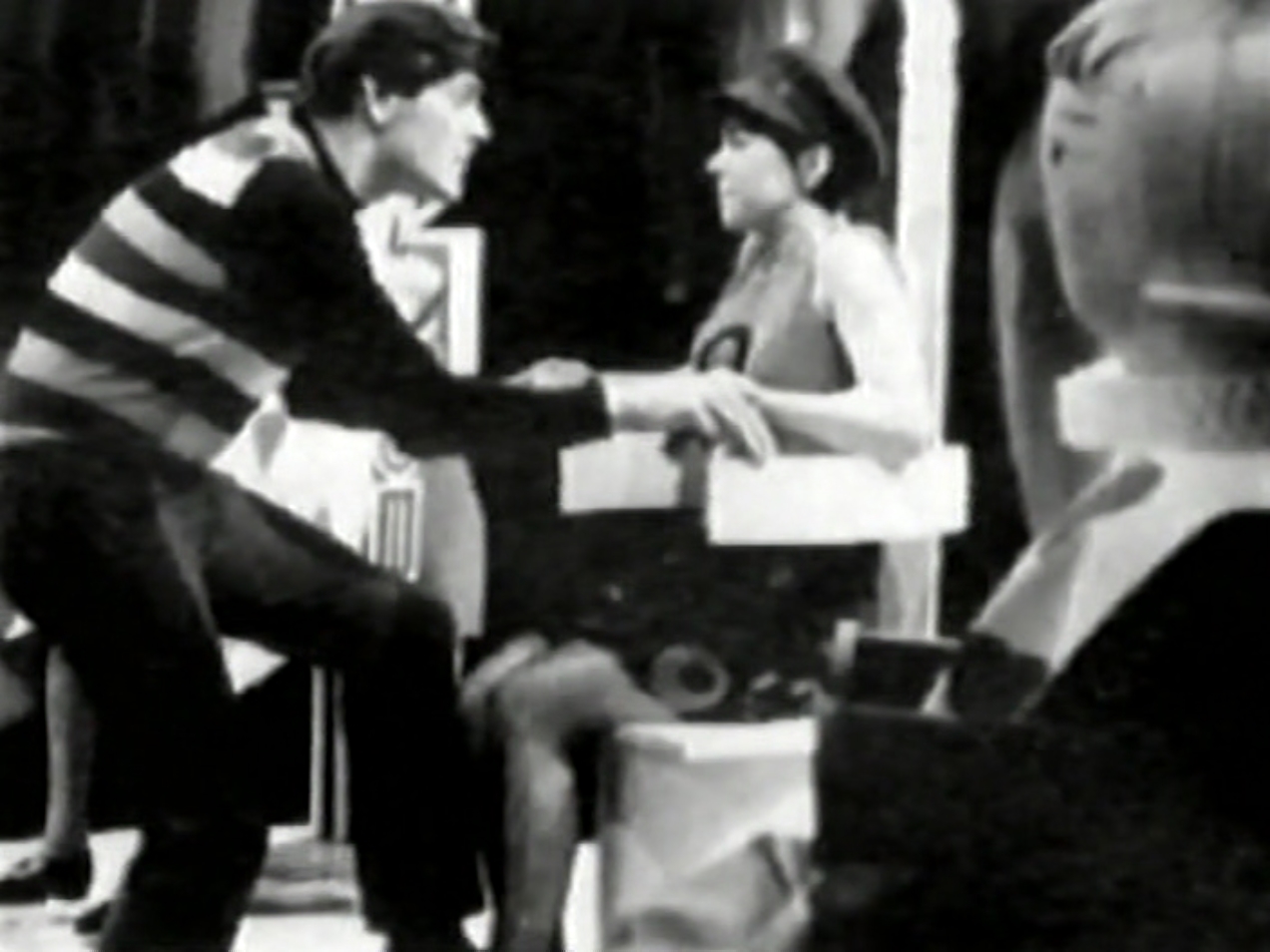
There’s a tense moment where it seems that Dodo is about to die by freezing solid, but Steven manages to help her get free, moments from death.
All’s not lost yet, however. Back in the other room, the King and Queen run into difficulties when the Joker refuses to be their guinea pig. Deciding that if they’re going to go, they’ll go together, they choose a seat and both sit down. Nothing happens. It seems they got lucky.
Or not.
Steven and Dodo enter just as the chair collapses under them. Not that lucky.
The Doctor’s companions use the last chair, and another fake TARDIS appears. The Toymaker gives them a ring on the TARDIS phone, and offers them a clue to their next game, and a way out, through a passage lined with life-sized ballerina dolls.
This week’s clue is:
Hunt the key, to fit the door
That leads out on the dancing floor,
Then escape the rhythmic beat,
Or you’ll forever, tap your feet.
I don’t know what annoys me more: the bizarre comma placement or the fact that these aren’t actually riddles that the audience can solve. Well, this isn’t even a riddle really, more rhyming instructions.
Why are they showing these at the end of the episodes?
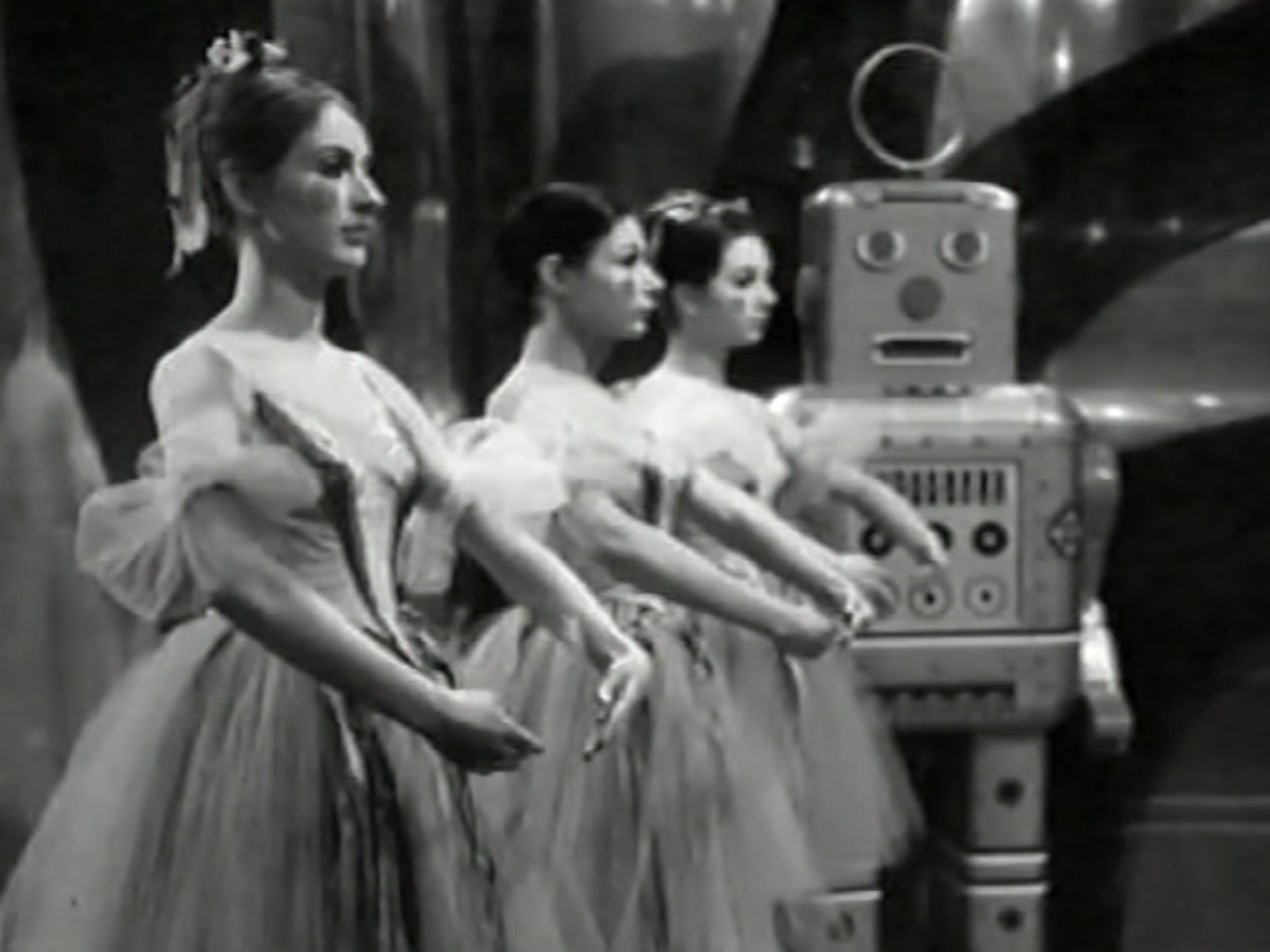
THE DANCING FLOOR
Past the ballerinas, Steven and Dodo stumble upon a kitchen, where they meet some more of the Toymaker’s playthings, Mrs Wiggs the cook and Sgt. Rugg. These two are supposed to be funny, I think.
Per the rhyming instructions, Steven and Dodo start searching for the key to the dancing floor, which is just next door. The Sgt. and Mrs Wiggs’ antics quickly irritate Steven, who manages to hold his temper at the urging of Dodo. Again, I really can’t blame him. There are few things more annoying than an unfunny ‘comedic’ character.
Of course everything I say is pure comedic gold, so I can speak as an authority on that.
The Doctor keeps trying to slow his progress in the game to buy the others more time, but the Toymaker won’t have it, artificially skipping the game ahead dozens of moves at a time.
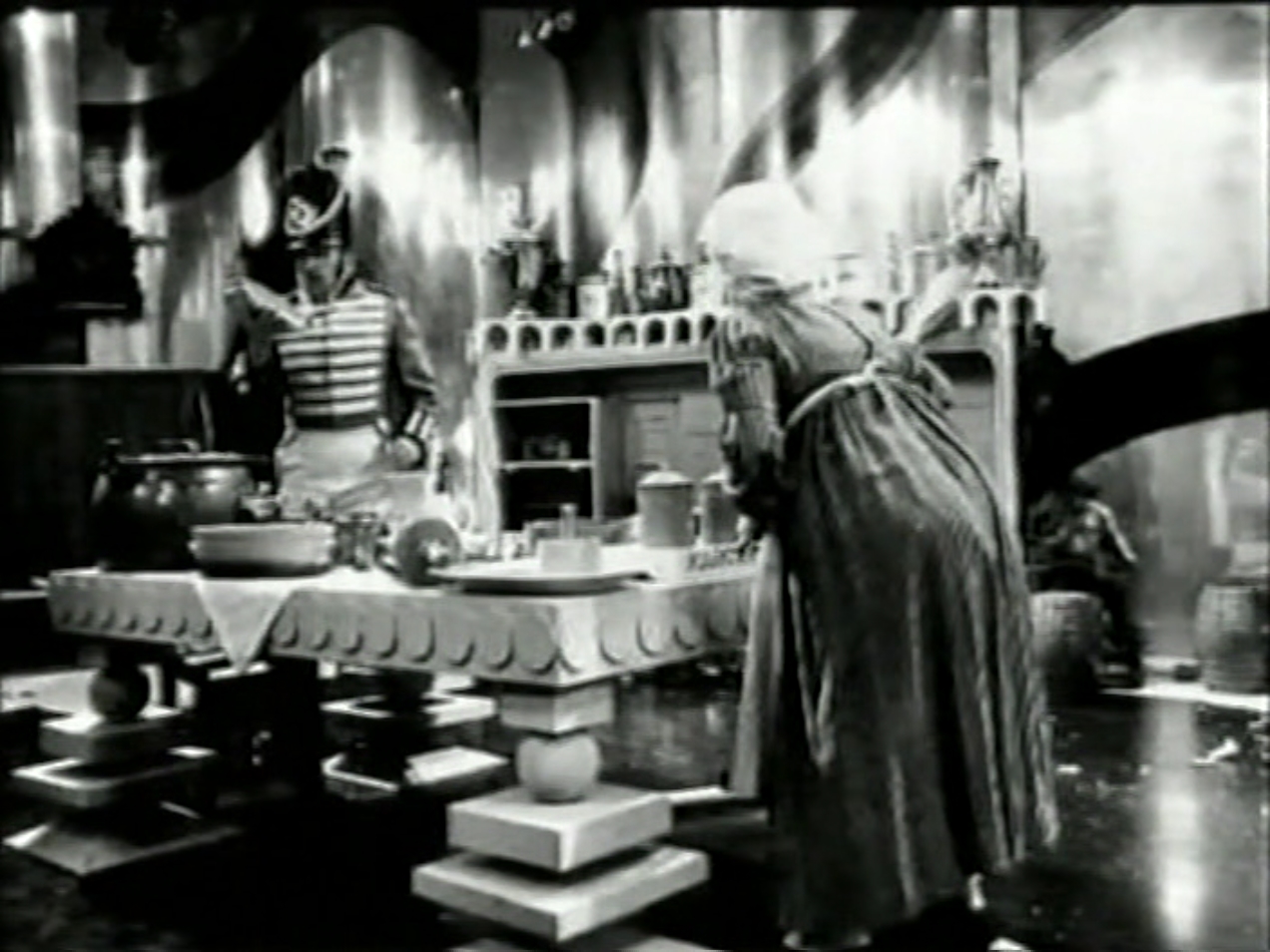
With a bit of buttering-up from Dodo, the Sgt. agrees to help the pair out in their search, but quickly runs afoul of the cook, who doesn’t appreciate the destruction he’s wreaking in her kitchen.
Like the previous challenges, this is painfully tiresome to watch.
We’re eventually put out of our misery when Dodo realises they haven’t looked inside the pie on the kitchen table, and plunging a hand into the pastry finds the key.
The pair rush off, leaving the others to get a good scolding from the Toymaker, who orders them to prevent the companions reaching the other end of the dancefloor.
If not, he’ll break them, as easily as smashing a plate.
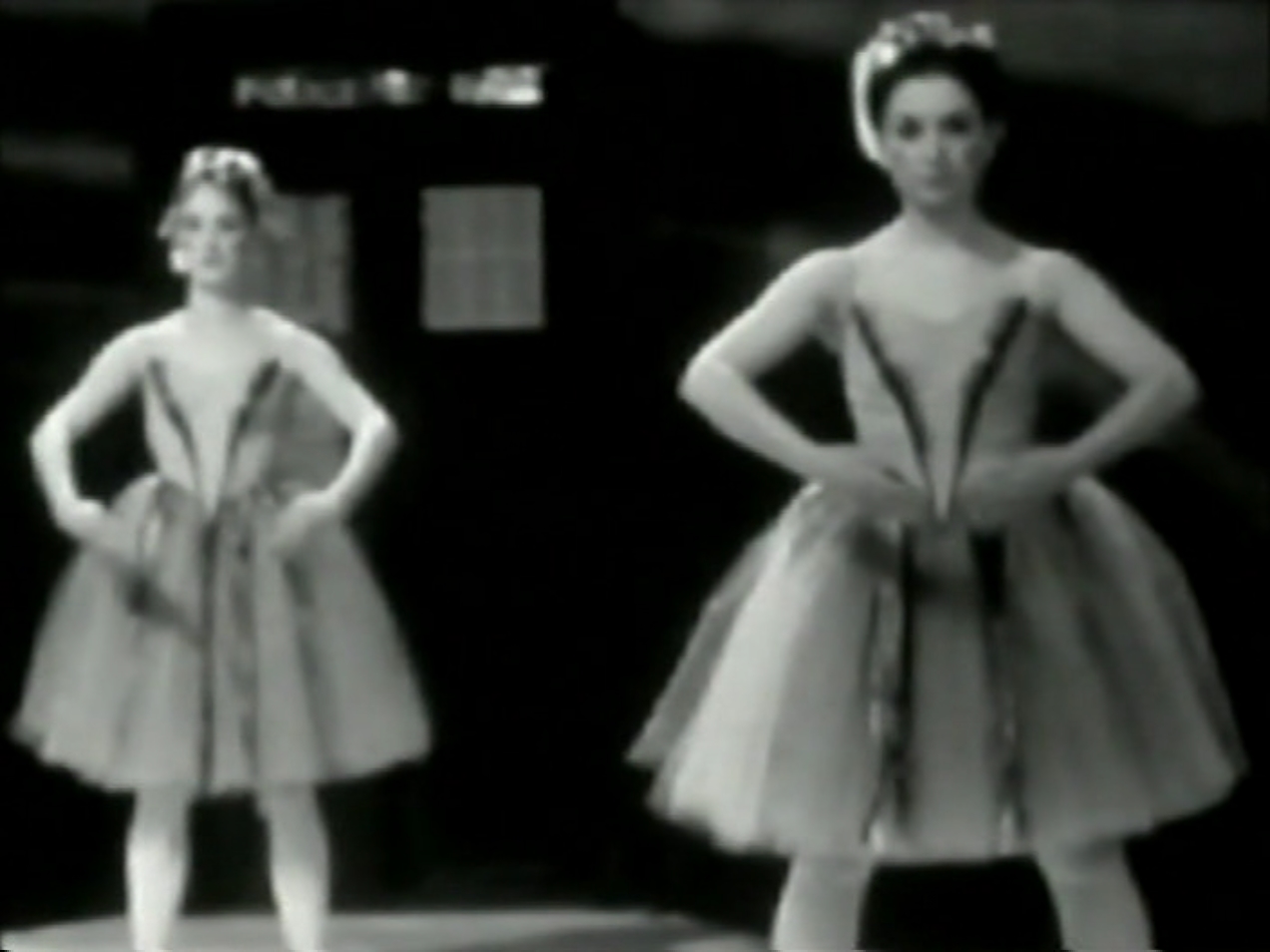
Steven and Dodo enter a room with a triangular raised dais, on which three ballerinas dance beautifully. The music accompanying them is less than beautiful.
The cook and the Sgt. enter close behind them, and Steven attempts to cross the dancefloor. However, he immediately finds himself caught up in the dance– in fact, he can’t stop.
The dolls spin the group around the dancefloor, holding on with a grip like iron, but with some effort Steven and Dodo manage to dance their way over to yet another fake TARDIS. Will they ever find the real thing?
Dodo wonders if they’ll see the cook and the Sgt. again. Exasperated, Steven reminds her that they’re just figments of the Toymaker’s imagination. But if that’s true, then why do they always lose, and why always by doing something silly and human?
Maybe they really do have minds of their own.
Disgusted with his incompetent minions, the Toymaker offers up a new doll for them to play with, the nastiest apparently. A devil? A monstrous beast? No…it’s a jolly schoolboy.
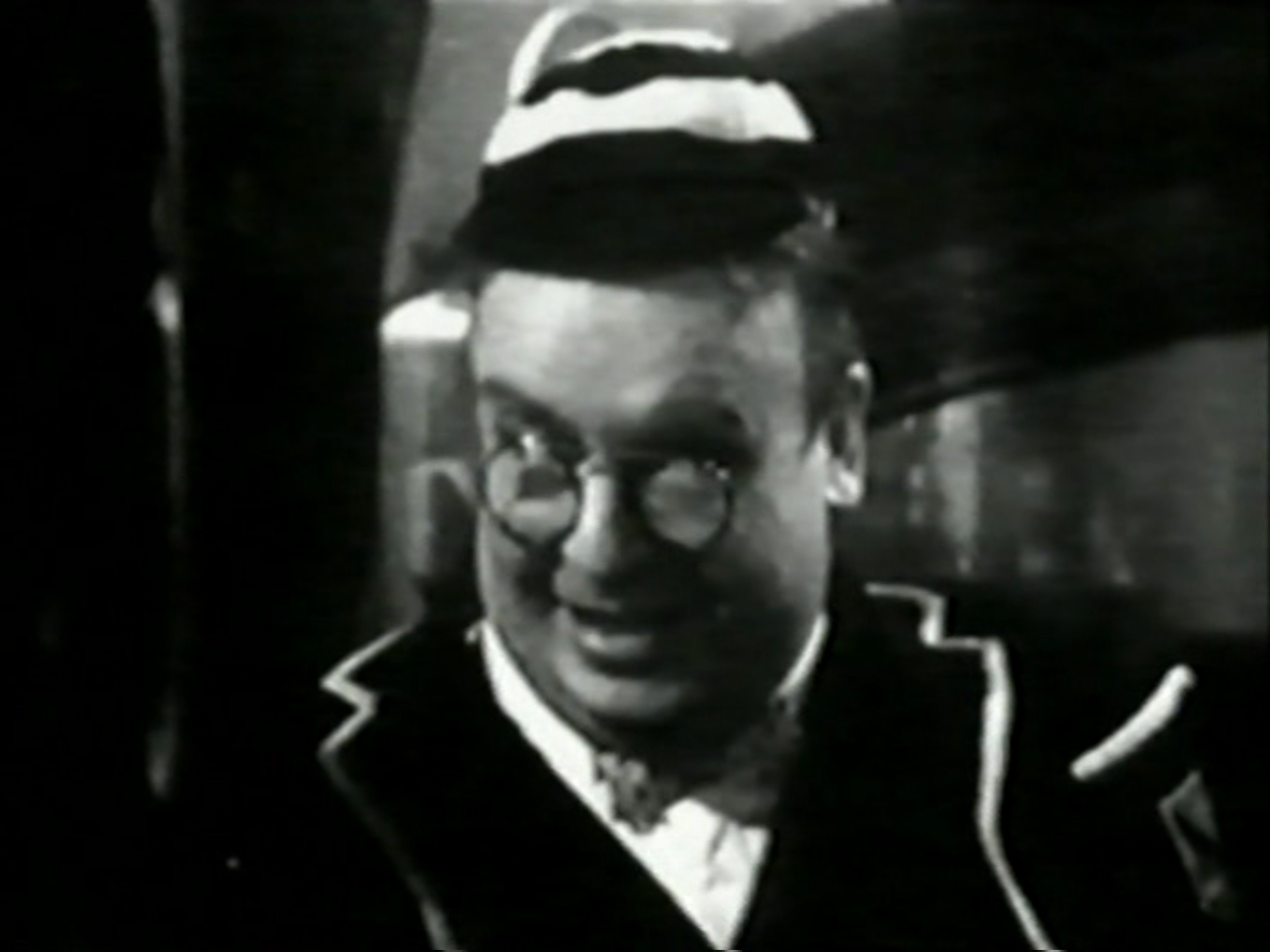
Schoolboy? He looks at least forty!
I wouldn’t take his sweets if I were you, Dodo. There’s something unsavoury about his manner.
Lady luck
Will show the way,Win the game
Or here you’ll stay
THE FINAL TEST
So, what’s our next game? Hopscotch. How thrilling. Throw in an electrified floor, however, and the game gets a little more interesting.
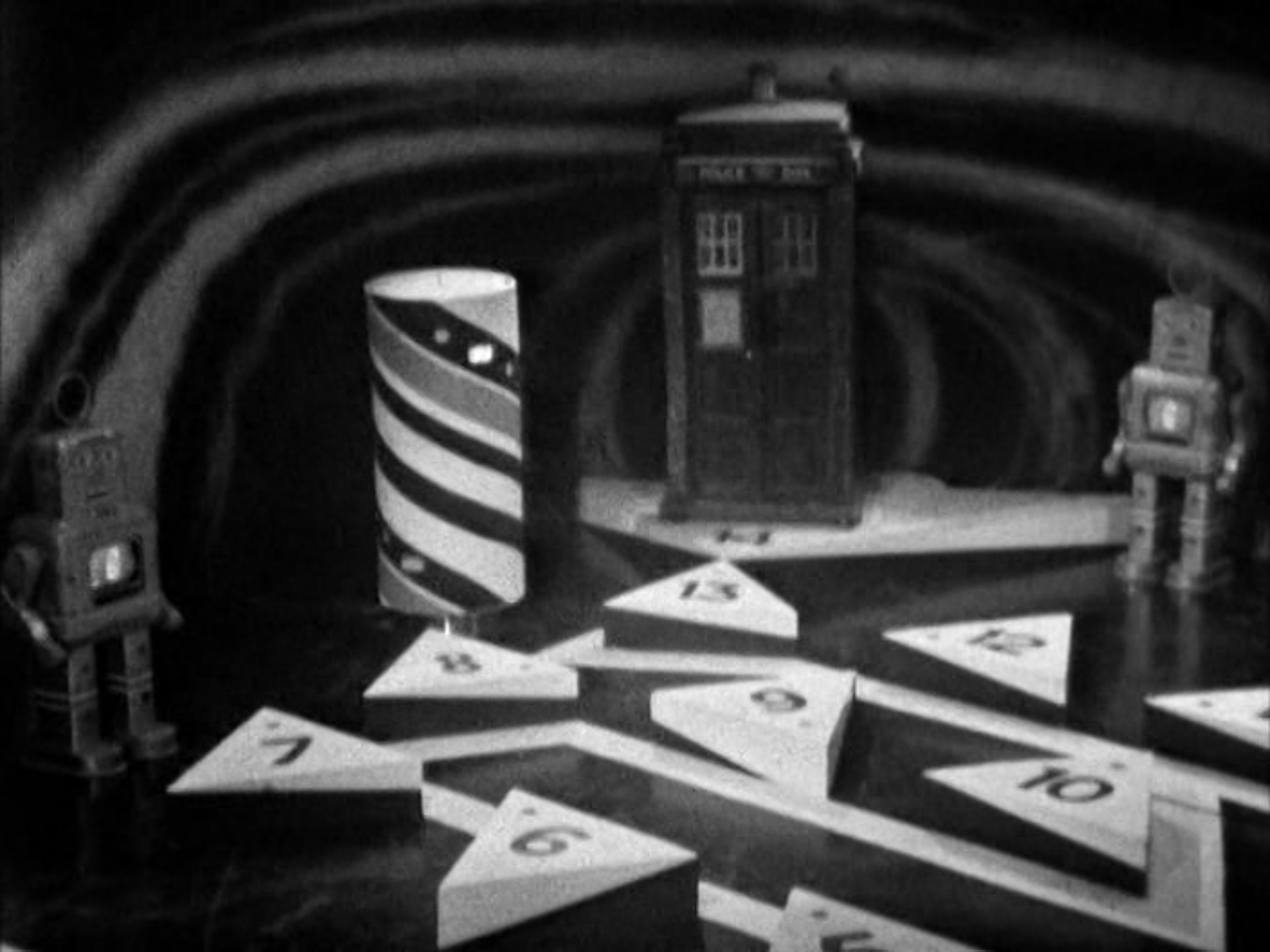
The ‘schoolboy’ Cyril seems to be playing fair at first, but keeps adding new rules to the game whenever the companions have the upper hand. With how irritating he is and his love of practical ‘jokes’ like hand-buzzers, some viewers may be reminded of the Billy Bunter character from the Greyfriars School stories. Amusingly, so many apparently noticed this the previous week that after this week’s episode the continuity announcer had to clarify that Cyril is merely a ‘Bunter-like’ character, therefore not infringing any copyrights.
Feeling generous, the Toymaker allows the Doctor the use of his voice again. Welcome back, Mr. Hartnell. Been anywhere nice?
Cyril’s mischief turns nasty in the hopscotch game as he almost knocks Dodo onto the electrified floor. When Steven comes over to scold him, Cyril sends both back to the start, as he had landed on Dodo’s triangle (and according to the rules, the previous occupant of a triangle has to go back to the start if someone else lands on that same triangle. Wow, that was boring to explain), and Steven broke the rules.
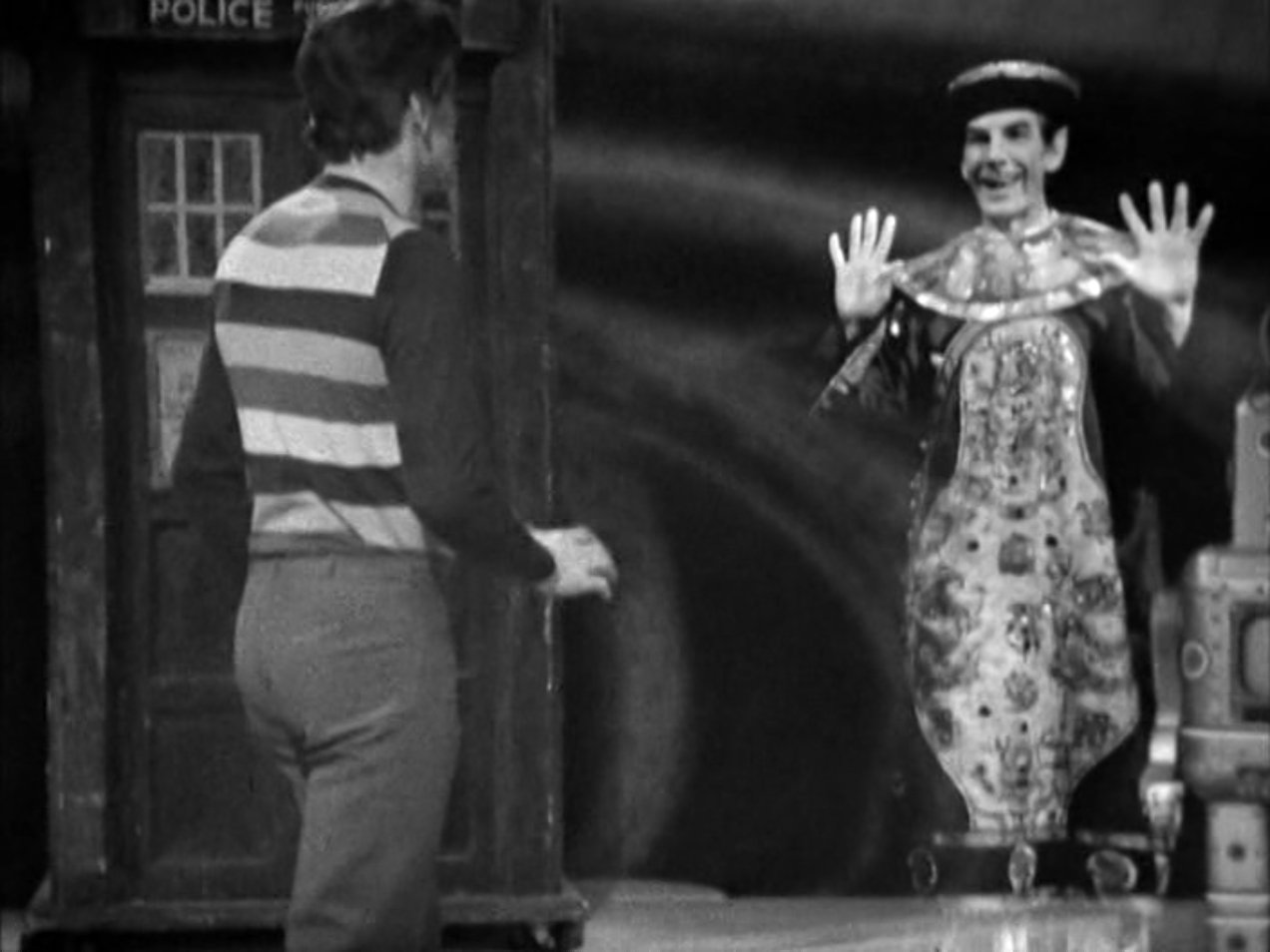
Steven tries to just hop over to the TARDIS at the end of the course, but the Toymaker pops up to do jazz hands at him and blocks his way with an invisible barrier. They’re going to have to play by the Toymaker’s rules.
Finding himself frustrated with the Doctor’s continuing reluctance to speak, the Toymaker accelerates the game to spite him. The others are going to have to hurry.
Their bratty opponent pulls an obvious stunt when he pretends to hurt his foot, and Dodo comes to see if he’s all right. He is, of course, and he’s tricked her into breaking the rules, so back to the start she goes. Again.
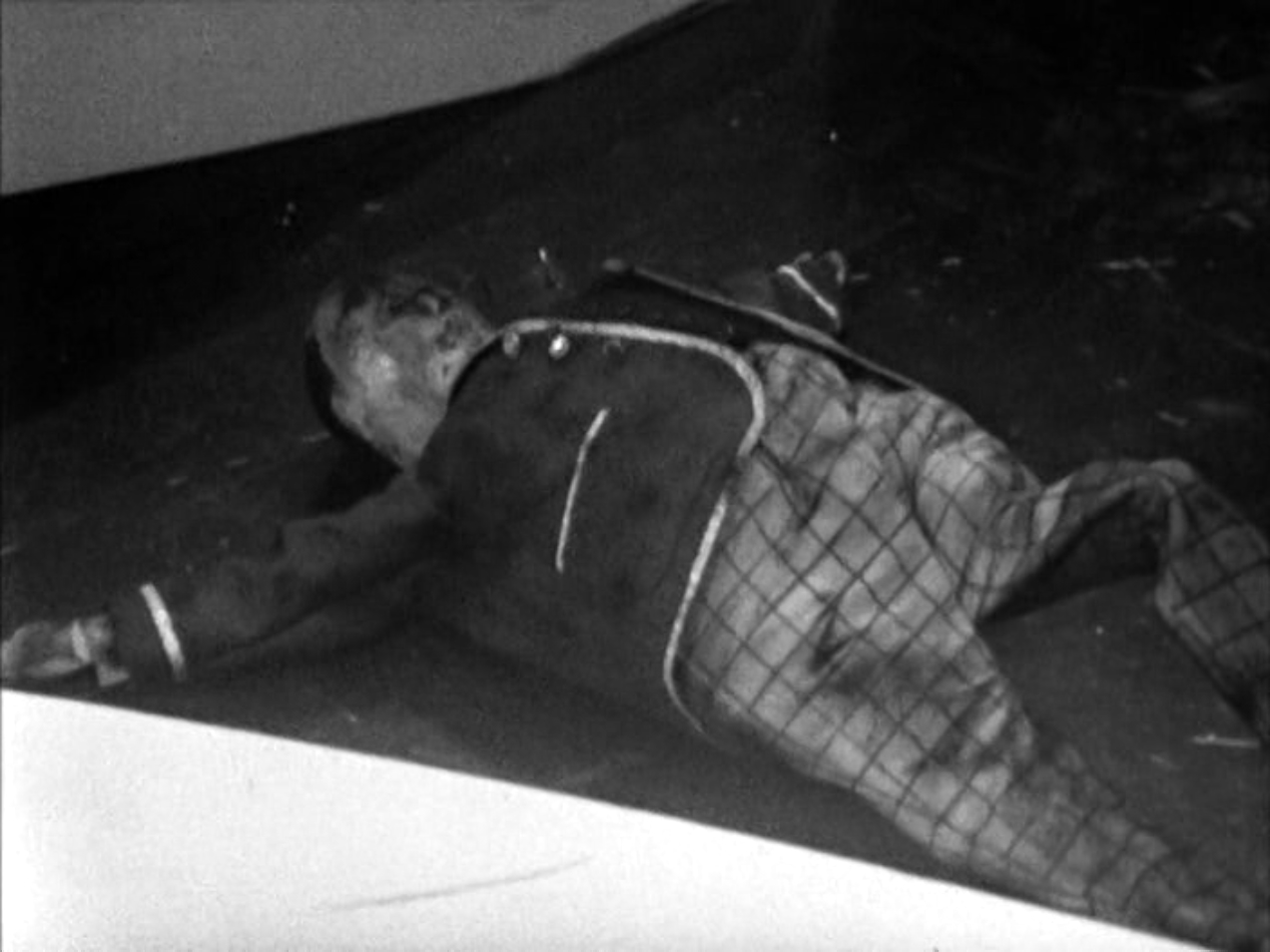
On Cyril’s next roll, he rolls high enough to win the game. In a shocking turn of events, however, he stumbles and falls. Zap.
It’s a good thing he turned back into a doll, or that would have been quite grisly. There’s an awful lot of smoke.
Steven finds that the tile Cyril slipped on was covered in a slippery powder, which he must have put there to sabotage the companions and forgotten about.
They finally reach the police box as the Doctor makes his penultimate move. Could it be they’ve found the real TARDIS? Yes. Yes they have.
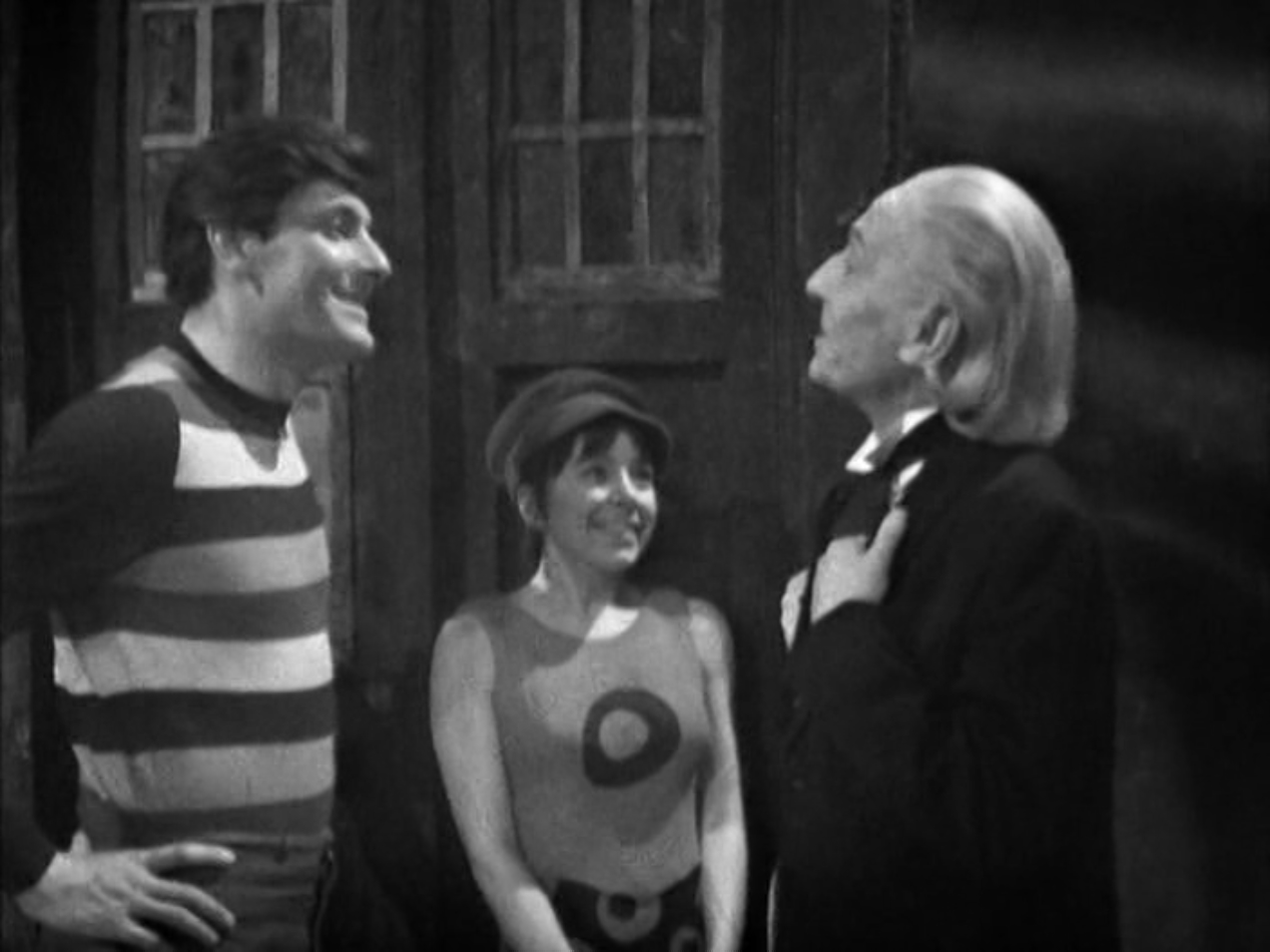
Fully visible once more, the Doctor halts his game and goes to check on his ship, reuniting with his friends.
Their relief doesn’t last long, as the Toymaker shows up to remind them that they still haven’t won. In fact, they can’t win. If the game ends, this whole world will disappear, and them with it. However, they can’t leave until the Doctor finishes his game. It’s quite the Catch-22.
It doesn’t look like they can talk their way out of this…or can they? Ordering Steven to pre-set the TARDIS controls, the Doctor pulls off an uncanny impression of the Toymaker’s voice to order the game to advance to the final move.
The face the Toymaker pulls as his world collapses is absolutely hilarious.
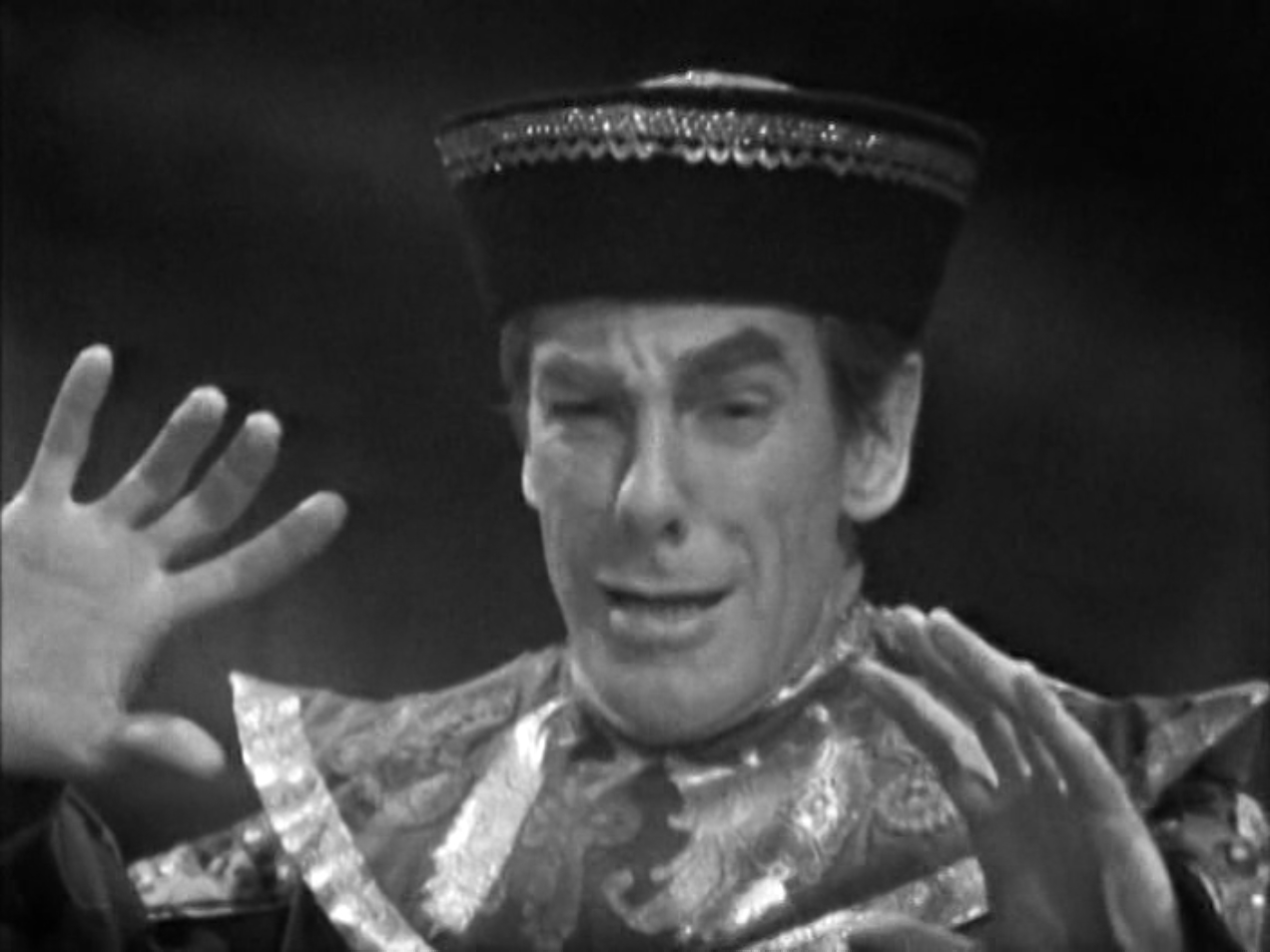
Still, being an immortal the Toymaker will surely be back some day, and he won’t let the Doctor get away with a trick like that again. That’s a way off though, so for now they can celebrate with some sweets.
And the Doctor promptly cracks a tooth on one.
I suppose next week will be the thrilling search for a dentist.
Final Thoughts
That brings us to the end of The Celestial Toymaker. I wanted to like this serial. There is plenty about it that I can appreciate. Micheal Gough’s performance as the Toymaker is a real highlight. He’s a very charismatic and compelling villain, definitely a worthy opponent for the Doctor. In many ways, he’s like a petulant child, almost pitiable, but there’s a real icy malice under it all. He’s a cautionary tale about the downsides of immortality. If you live forever, mortal lives are so short compared to yours they might as well be mayflies. What do morals matter to you when you outlive everyone who remembers your sins?
I’d certainly be open to seeing him make another appearance at some point, sans clowns.
The overall concept is quite fun, but the dull nature of the challenges made the execution quite lacklustre. When talking with friends, some complained that this serial was too fantastical. I disagree. I don’t think it was fantastical enough. We’re in a world entirely created from the imagination of a bored immortal, and the best he can come up with is electric hopscotch? Why not lean into the surrealism, a world that’s at turns both dream and nightmare? I don’t really care how the Toymaker has this level of control over his world, but I do care that he doesn’t use his powers to do much that’s truly interesting.
Something I’m a little surprised wasn’t brought up again at the end was the issue of the Toymaker’s playthings. Over the course of the serial, it’s all but outright stated that all his toys were once people. The Toymaker may have supplanted their wills with his own, but there are hints that there’s still some small part of the original person buried deep down.
Though the Toymaker must survive the destruction of his world, what of the toys? Are they too far removed from their humanity to be worth saving?
That said, they were all extremely annoying and I am not at all sorry to see the back of them.
There’s not much to complain about in terms of production value, with some pretty elaborate sets, effects and costumes. I did rather like the costuming work on the King and Queen of Hearts.
I can’t offer as much praise to the music in this serial, which seemed composed specifically to aggravate me. It’s repetitive, grating, unpleasant and repetitive.
Well, that’s enough griping for today, I think. Join me next time as we take a trip to the Wild West in search of… a dentist. It’s not the weirdest premise for a story I’ve ever heard.
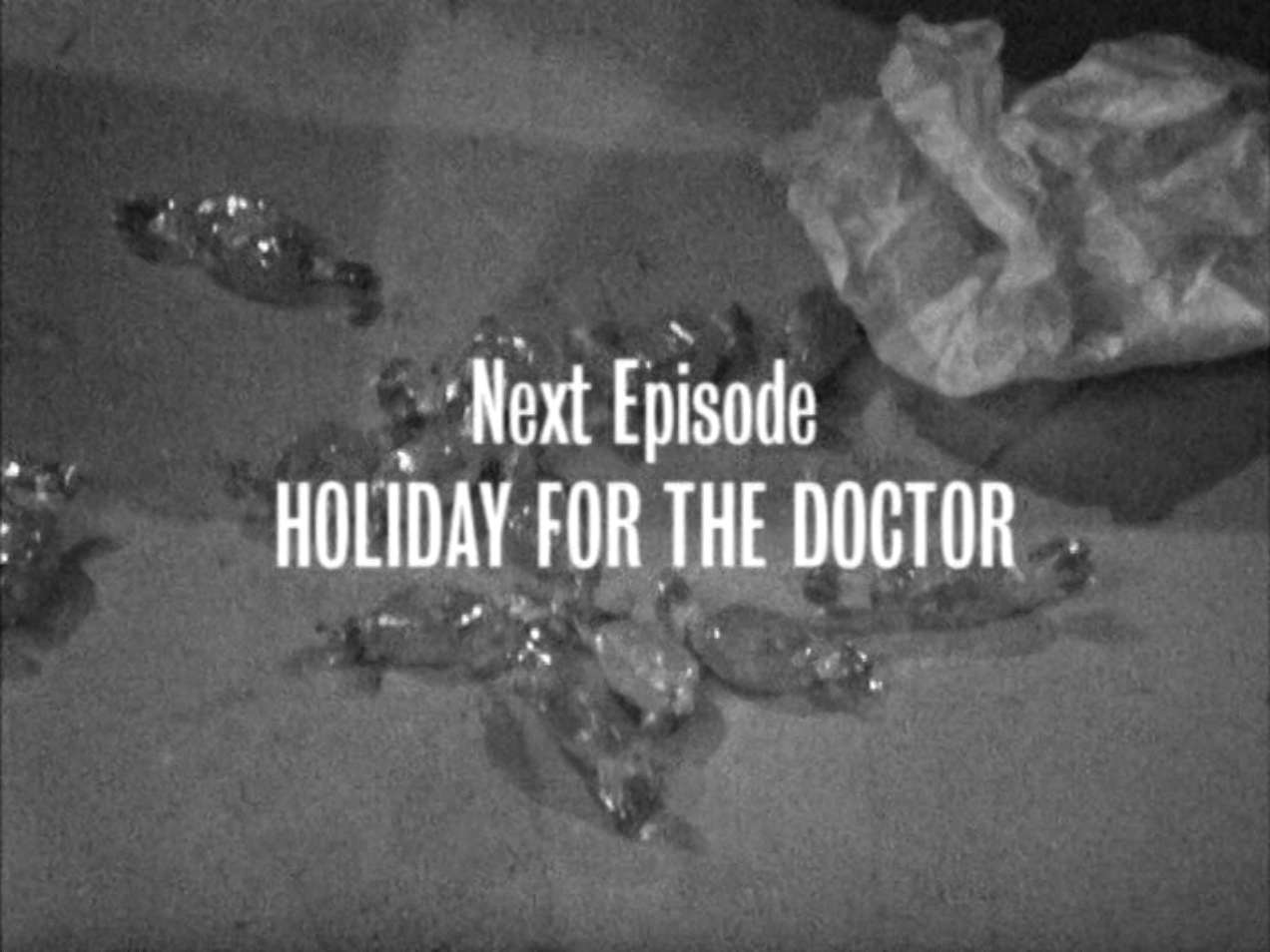
3 out of 5 stars

